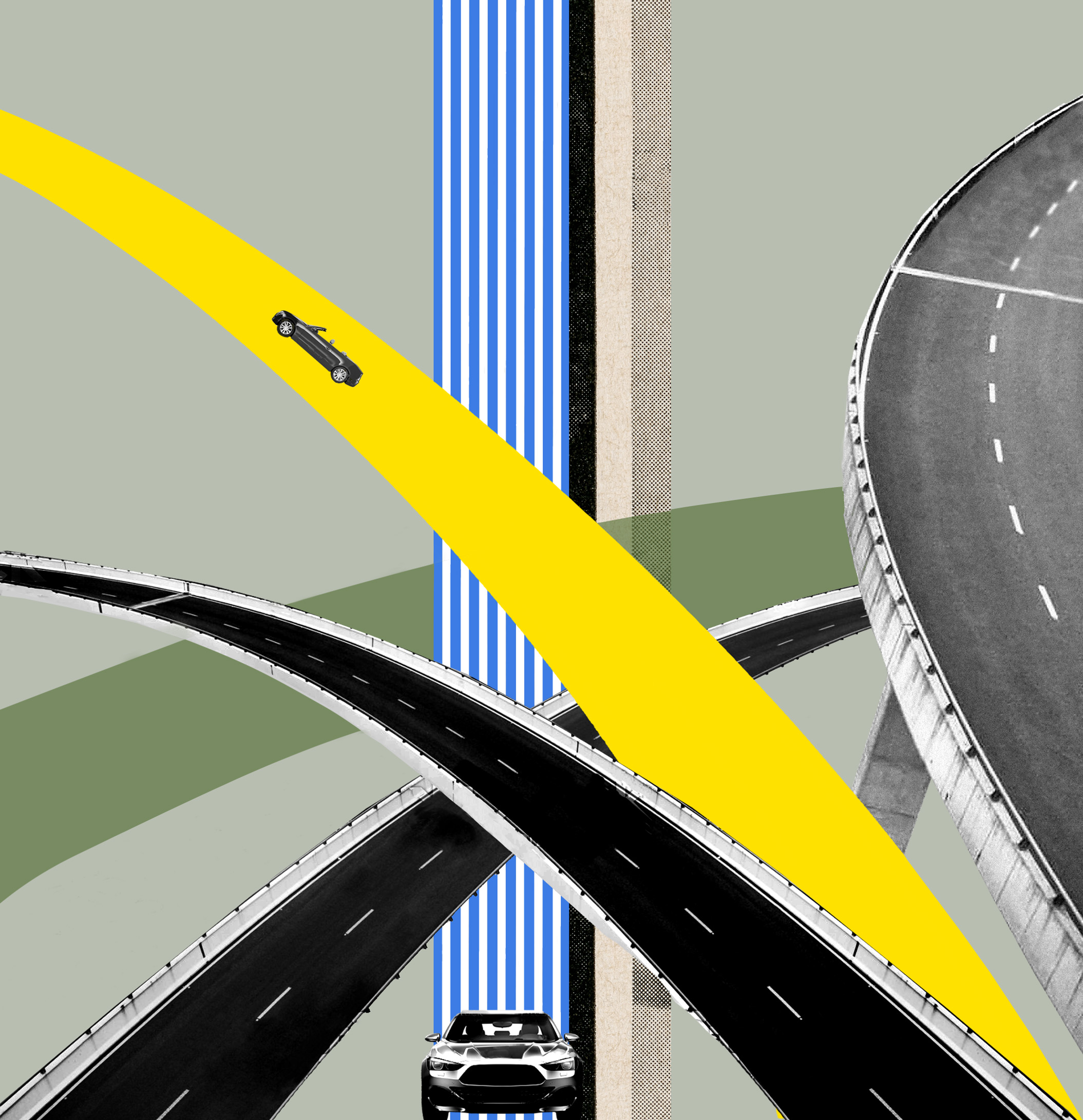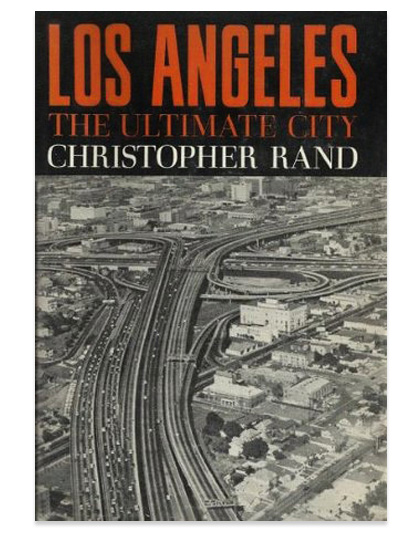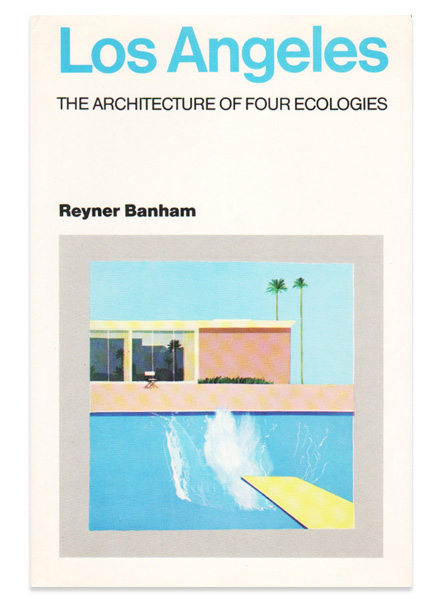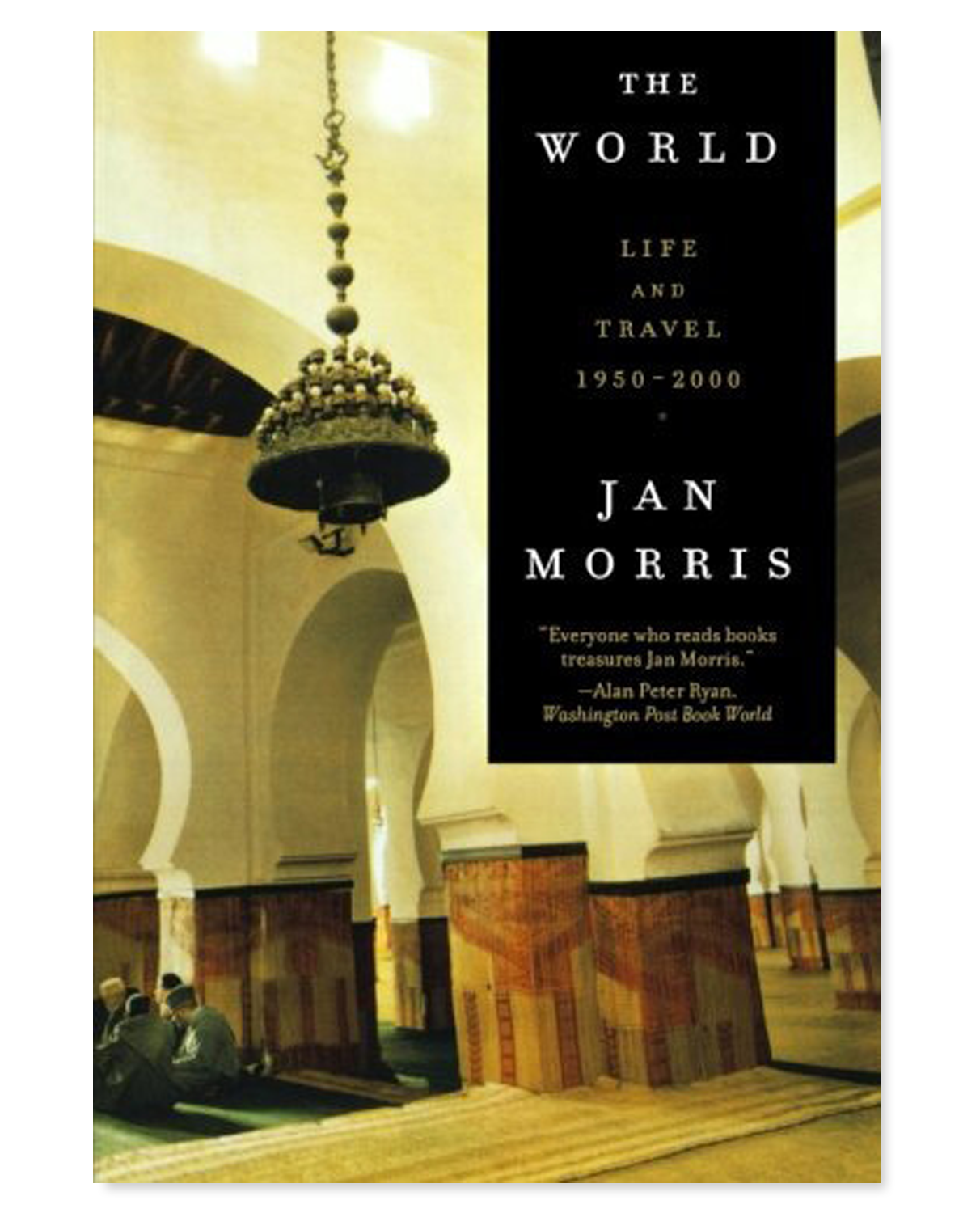Los Angeles: “A Humming, Smoking, Ever-Changing Contraption”
Three visitors on why they see Los Angeles as a machine.

Los Angeles is vast and practically formless, a city so unlike any other that it can hardly be called a city at all. That, at least, is the impression the past few decades of writing on the Southern California metropolis has tended to offer. Hardened into received wisdom, this presumption is now repeated even by astute contemporary observers. But there’s more to LA than that tired critique suggests.

To see Los Angeles clearly, one needs to go half a century into the past, when three writers came to take the measure of what was then the fastest-growing city in the rich world. Though each brought a distinctive and formidable stock of world experience and historical knowledge, all came to understand postwar Los Angeles by recognizing how technology gave the city both purpose and possibility.
“All modern cities are machines, but LA is even more of a machine than the others … it is a humming, smoking, ever-changing contraption,” Christopher Rand wrote in his 1967 book Los Angeles: The Ultimate City, which began as a three-part series in the New Yorker. The lack of water and threat of earthquakes made this place particularly dependent on technology, he argued. Cities, since the very beginning, had relied on water management, but the complexity of LA’s water system, fed by a giant aqueduct that diverts water from the Owens Valley some 200 miles to the north, was far greater than anything that had come before.
Rand also pointed out that while LA was known for the film industry, aerospace in fact dominated the city’s economy. The industry was diminished with the end of the Cold War, but decades later, SpaceX, the world’s most valuable privately held company, is based there. “As our technological force manifests itself in Los Angeles, it seems to have many questionable things about it. The aerospace industry, for instance, seems surrounded by a cloud of false publicity,” Rand wrote in 1966.
"There are craftsmen everywhere in L.A., craftsmen in electronics, in film-making, in literature, in social science, in advertising, in fashion. Here Lockheed makes its aircraft. Here NASA makes its space shuttle orbiter.”
Jan Morris
The Ultimate City went out of print years ago. But Los Angeles: The Architecture of Four Ecologies, by the English architecture critic Reyner Banham and published in 1971, remains a fixture on “understanding Los Angeles” reading lists. Banham thought of LA as a city that “makes nonsense of history and breaks all the rules,” as he later said in a television documentary.

Unlike Rand, who resented having to drive, Banham embraced the automobile. “One can most properly begin by learning the local language; and the language of design, architecture, and urbanism in Los Angeles is the language of movement,” he wrote. Therefore, “like earlier generations of English intellectuals who taught themselves Italian in order to read Dante in the original, I learned to drive in order to read Los Angeles in the original.”
As stimulated by the task as Rand was irritated by it, Banham saw driving as a form of “willing acquiescence in an incredibly demanding man/machine system.” Within this system a host of “moral, governmental, commercial, and mechanical” authorities “direct the freeway driver through a situation so closely controlled” that “he will hardly notice any difference when the freeways are finally fitted with computerized automatic control systems that will take charge of the car at the on-ramp and direct it at properly regulated speeds and correctly selected routes to a pre--programmed choice of off-ramp.”
But even as Banham envisioned this self-driving future, he wondered whether “the marginal gains in efficiency through automation might be offset by the psychological deprivations caused by destroying the residual illusions of free decision and driving skill.”
Collectively these illusions constitute a kind of software, he wrote, and “however inefficiently organized, the million or so human minds at large on the freeway system at any time comprise a far greater computing capacity than could be built into any machine currently conceivable.”
Scarcely anyone in 1971, of course, could have realistically conceived of just how great an expansion of computing capacity lay ahead. More plausible to Banham than the automation of the Los Angeles freeway network was its obsolescence, given that “it is inconceivable to Angelenos that it should not be replaced by an even better system nearer to the perfection they are always seeking.”
Another oft-repeated perception of Los Angeles holds that it was “built for the car.” For all his enthusiasm about driving, however, Banham takes pains to refute the “common mechanistic misconception that everything in Los Angeles is caused by the automobile as a way of life.”
As much a historian as a critic, Banham shows how, though Los Angeles may have accommodated the private car more readily than older cities, it could do so only because of a preexisting distinction: the now-dismantled Pacific Electric and Los Angeles urban railways had already allowed it to be built out and subdivided on the mechanical rather than the human scale. “If there has to be a mechanistic interpretation,” he allows, “then it must be that the automobile and the architecture alike are the products of the Pacific Electric Railroad as a way of life.”
Deeply invested in both architecture and technology, Banham had made his name almost a decade earlier with Theory and Design in the First Machine Age, a treatise on the aesthetics of European built environments as reimagined by movements like Futurism and the Bauhaus as well as by theorist--practitioners like Adolf Loos and Le Corbusier. This positioned him well to critique a city like Los Angeles, which was home to an architectural community that included European émigrés like Richard Neutra, a prominent modernist. In Banham’s estimation, Neutra “[used] the Californian opportunity to make a European dream come true.” He observes that “the lightweight steel frame, the prefabricated panels, the suspended balconies, the conspicuously advanced mechanical specification, the edgy detailing, look like an attempt to realize a purely European vision of Machine Age architecture.”
Banham thought of LA as a city that “makes nonsense of history and breaks all the rules."
“Midcentury modern” houses such as those Neutra built in Los Angeles from the 1930s through the ’60s have become objects of near fetishistic desire, with price tags to match. Others experimented further toward a distinctively Southern California architecture, whose rigor in materials and design took advantage of the area’s mild climate and the “indoor-outdoor” lifestyles it enabled. To be sure, this required architectural genius of the kind supplied by Neutra—or colleagues like Rudolph Schindler, Raphael Soriano, and Craig Ellwood, all on the cutting edge of postwar residential architecture in Los Angeles—but also an uncommon amount of knowledge, skill, and experience in engineering and construction. Nor was such skill required just to put up the houses themselves: Banham and Rand both marveled at the tools and techniques employed to carve the area’s mountainsides into level plots, though not without trepidation at the potential environmental consequences.
The buildings and infrastructure of Los Angeles, as the late travel writer and historian Jan Morris saw them, embody an unusually high degree of know-how. “Remember ‘know-how’?” she asked in a 1976 essay on the city later collected in her anthology The World: Life and Travel 1950–2000. “It was one of the vogue words of the forties and fifties, now rather out of fashion. It reflected a whole climate and tone of American thought in the years of supreme American optimism. It stood for skill and experience indeed, but it also expressed the certainty that America’s particular genius, the genius for applied logic, for systems, for devices, was inexorably the herald of progress.” This spirit characterized the prosperous and innovation-minded postwar decades that Banham labeled the “Second Machine Age.” In Los Angeles, as Morris saw it in the 1970s, “the lost American faith in machines and materialism built its own astonishing monument.”

Though by that time the city had a somewhat libertine reputation, Morris points out that “it was not liberty that Los Angeles cherished in its prime, or at least not absolute liberty. A spiritual culture can be anarchical, a material culture must be disciplined. Implicit to the promise of technological fulfillment was the necessity of system, and L.A. soon became a firmly ordered place.” Those early streetcar systems “drew together the scattered settlements of the time, bringing them all into cityness.” Then came the freeways, which like all complex machines challenge their users to master them. “There comes a moment,” Morris writes, “when something clicks in one’s own mechanism, and suddenly one grasps the rhythm of the freeway system, masters its tribal or ritual forms, and discovers it to be not a disruptive element at all, but a kind of computer key to the use of Los Angeles.”
Having acquired that key, Morris discovers that in Los Angeles, “behind the flash and the braggadocio, solid skills and scholarship prosper. There are craftsmen everywhere in L.A., craftsmen in electronics, in film-making, in literature, in social science, in advertising, in fashion. Here Lockheed makes its aircraft. Here NASA makes its space shuttle orbiter.”
However impressive the technicians employed by the high-profile film and television industries, it was aerospace that most highly concentrated the know-how of mid-20th-century Los Angeles. “In theory, Los Angeles is just another American city, thousands of miles from the nation’s capital,” Rand wrote a decade earlier, “but in actuality it is itself a secondary capital, for technological warfare.” He worried that “our great new technology, with all its power to lead us along, is up to now really beyond the scrutiny and control of our democratic institutions.”
The machine of the city itself has only grown larger and more complex in the decades since Rand, Banham, and Morris came to grips with how it works. There have been improvements, not least the alleviation of the smog notorious in the 1960s and ’70s. The freeways still stand, but over the past 30 years a new urban rail system has also begun to make its presence felt. Increasing density and verticality have even validated Rand’s premature-sounding observation that Los Angeles’s “preference for one-family houses seems to be on the way out.” These modifications have been performed more slowly than necessary, which is perhaps to be expected: for better or for worse, Los Angeles is no longer an experimental urban prototype.
Deep Dive
Humans and technology
Building a more reliable supply chain
Rapidly advancing technologies are building the modern supply chain, making transparent, collaborative, and data-driven systems a reality.
Building a data-driven health-care ecosystem
Harnessing data to improve the equity, affordability, and quality of the health care system.
Let’s not make the same mistakes with AI that we made with social media
Social media’s unregulated evolution over the past decade holds a lot of lessons that apply directly to AI companies and technologies.
Stay connected
Get the latest updates from
MIT Technology Review
Discover special offers, top stories, upcoming events, and more.